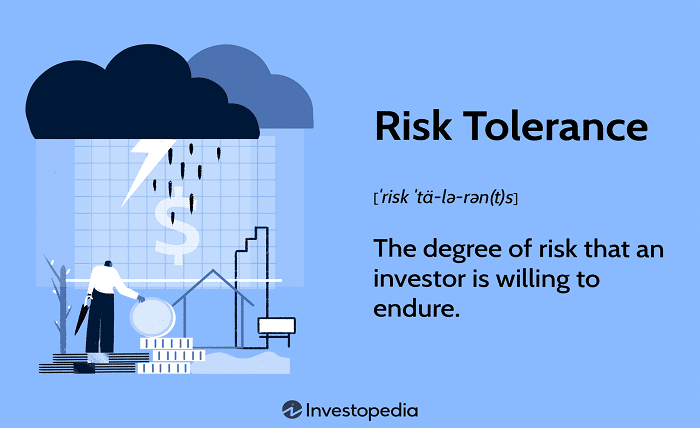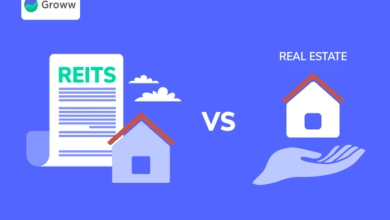Risk Tolerance: A Comprehensive Guide to Financial Decision-Making

Risk tolerance is the degree to which an individual is willing and able to endure market fluctuations and potential losses while pursuing investment goals. It’s a crucial concept in personal finance, influencing how you allocate assets and structure your portfolio. Understanding your risk tolerance helps you avoid decisions that might cause unnecessary stress or jeopardize your financial plans.
Whether you’re new to investing or a seasoned pro, assessing your risk tolerance can ensure your strategies align with your comfort level and long-term objectives.
Why Risk Tolerance Matters in Investing
Risk tolerance is more than a buzzword—it’s a cornerstone of investment success. A mismatch between your risk tolerance and investment choices can lead to anxiety, rash decisions, or missed opportunities. For example, if you have low risk tolerance but invest heavily in volatile assets, you may panic during market downturns.
Conversely, an overly cautious approach may prevent you from achieving growth. Striking a balance based on your risk tolerance ensures you remain committed to your strategy, even when markets fluctuate.
Factors That Influence Risk Tolerance
Risk tolerance isn’t static; it evolves based on various factors:
- Age: Younger individuals typically have higher risk tolerance due to longer investment horizons.
- Income and Wealth: Higher disposable income and substantial savings can increase risk tolerance.
- Financial Goals: Short-term goals call for lower risk, while long-term objectives may accommodate higher risk.
- Experience: Knowledge of financial markets can make you more comfortable with risk.
- Psychological Profile: Your natural disposition—whether cautious or adventurous—plays a role in determining your risk tolerance.
Understanding these factors helps personalize your financial plan.
How to Assess Your Risk Tolerance
Assessing your risk tolerance involves a mix of self-reflection and structured evaluation:
- Questionnaires: Many financial institutions offer risk tolerance quizzes to gauge your comfort with market fluctuations.
- Scenario Analysis: Consider how you’d react to hypothetical losses in your portfolio.
- Historical Behavior: Reflect on past financial decisions during market downturns.
- Professional Guidance: Financial advisors can provide tools and insights to assess your risk tolerance accurately.
Taking the time to evaluate your risk tolerance provides a clearer path to informed investment choices.
Matching Investments to Your Risk Tolerance
Aligning investments with your risk tolerance ensures your portfolio reflects your comfort level. Here’s how to match investments:
- Low Risk Tolerance: Consider bonds, fixed-income securities, and blue-chip stocks.
- Moderate Risk Tolerance: Balance your portfolio with a mix of equities and stable investments.
- High Risk Tolerance: Explore growth stocks, emerging markets, and other high-volatility assets.
A diversified portfolio tailored to your risk tolerance provides both growth potential and stability.
Strategies to Manage Risk Tolerance
Risk tolerance isn’t about avoiding risks but managing them effectively. Here are strategies to balance your tolerance:
- Diversification: Spread investments across various asset classes to reduce risk.
- Periodic Rebalancing: Adjust your portfolio regularly to maintain alignment with your goals.
- Emergency Fund: Maintain a safety net to ensure financial stability during market fluctuations.
- Education: Stay informed about market trends to make confident decisions.
- Start Small: If uncertain, begin with conservative investments and gradually increase exposure.
Implementing these strategies helps you stay within your risk comfort zone while pursuing growth.
When to Reevaluate Your Risk Tolerance
Risk tolerance isn’t fixed—it changes with life circumstances. Reevaluate your risk tolerance in these situations:
- Major Life Events: Marriage, buying a home, or retirement can alter financial priorities.
- Market Conditions: Prolonged bear or bull markets may impact your risk perception.
- Age Milestones: Shifting from accumulation to preservation phases changes your risk profile.
- Financial Setbacks: Job loss or unexpected expenses might necessitate a more conservative approach.
Regularly revisiting your risk tolerance ensures it remains aligned with your financial journey.
Conclusion
Understanding and aligning your risk tolerance with your investment strategy is essential for long-term success. It minimizes stress, reduces impulsive decisions, and helps you stay committed during market ups and downs. By periodically assessing your risk tolerance and adjusting your portfolio accordingly, you can achieve financial goals while maintaining peace of mind. Embrace risk tolerance as a guiding principle for confident investing.
FAQs
- What is risk tolerance in simple terms?
Risk tolerance refers to how much financial risk you’re comfortable taking while pursuing your investment goals. - How can I determine my risk tolerance?
Use tools like questionnaires, reflect on your past behavior, and consult financial advisors for a personalized assessment. - Can my risk tolerance change over time?
Yes, risk tolerance evolves due to age, life events, financial goals, and market experience. - What happens if my portfolio doesn’t match my risk tolerance?
A mismatch can lead to stress, poor decisions, or underperformance. Aligning investments with your risk tolerance is critical. - Is high risk tolerance always better?
Not necessarily. High risk tolerance suits certain goals but can lead to losses if not managed properly. Balance is key.





